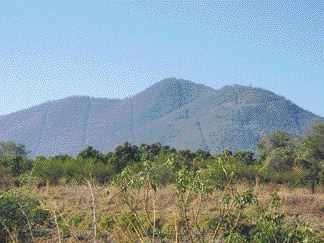A generally good quarter at
Aur made US$33.3 million (US35 per share) on revenue of US$96.5 million in the first quarter of 2005, up from a profit of US$26.6 million on revenue of US$88.8 million in the corresponding quarter of 2004. Copper production was down slightly to 27,500 tonnes, from 28,400 in the first three months of 2004.
Aur reported that drilling on a previously untested induced-polarization (IP) anomaly at the La Verde property in Mexico’s Michoacan state had intersected copper mineralization. The program is being expanded to 15,000 from 7,500 metres at a total cost of US$2.3 million.
The drilling tested the East and West zones, where, in the 1970s, copper mineralization near the surface was outlined.
The new mineralization is 500 metres west of the East zone, where one drill hole intersected 427 metres grading 0.49% copper, with 0.12 gram gold and 4.6 grams silver per tonne. The hole was stopped in mineralization at 681 metres, at a vertical depth of 550 metres, when the drill reached its practical limit.
The mineralization is in an intrusive breccia host, which is in turn part of a larger intrusive complex. The copper is held in chalcopyrite and bornite.
Models of the IP anomaly suggest the chargeable zone is considerably deeper than the zones tested by old drill holes. It extends about 4 km east to west, takes in both the East and West zones, and varies from 600 metres to 1.5 km wide.
Drilling on the East zone cut several long intersections of copper mineralization. In hole 6, a vertical hole on the southern side of the known mineralized zone, a 179-metre length averaged 1.02% copper. Hole 4 intersected two long zones, one of 115.5 metres grading 0.72% copper and 0.02% molybdenum, and another, starting at a vertical depth of 190 metres, of 195 metres grading 0.55% copper. Gold grades in the mineralized zones ranged from 0.05 to 0.2 gram per tonne, with silver grades mainly 2-6 grams per tonne.
Hole 3, which cut a 115.5-metre zone grading 1.15% copper, 0.06 gram gold and 8.2 grams silver per tonne, also averaged 0.02% moly and 0.07% cobalt.
In the West zone, 1.5 km to the west, one hole intersected 21.9 metres grading 1.11% copper. A second intersected six zones, including one 23.5 metres long that ran 2.85% copper. Both holes returned trace values in gold and silver, lower than those in the East zone.
Previous work on La Verde, by Lytton Minerals, included a 1972 feasibility study that estimated a reserve of 72 million tonnes grading 0.7% copper. The figures would have conformed to the old National Policy 2A, which was current at the time.
On the operations side, Aur’s mainstay Quebrada Blanca mine produced 19,358 tonnes copper in the quarter, of which 16,114 tonnes belonged to Aur, at a cash cost of US$1,370 per tonne (US62 per lb.). Quebrada Blanca mined 1.8 million tonnes grading an average of 1.32% copper. In the previous year, Quebrada Blanca mined 1.7 million tonnes grading 1.27% copper in the first quarter, and the mine produced 19,562 tonnes at a cash cost of US$1,260 per tonne.
Aur expects to have the Duck Pond copper-zinc mine in Newfoundland up and running at the end of 2006. The production will replace that from Louvicourt in northwestern Quebec, which is scheduled to be mined out in June.
Aur has also commissioned a full feasibility study on the potential for developing primary mineralization at the Andacollo copper mine in Chile, where it currently operates an open pit with a solvent extraction-electrowinning plant. The study, budgeted at US$5 million, is slated to appear early in 2006.
Prefeasibility work on the Andacollo primary mineralization suggested that a mine and mill would cost about US$312 million in total. It would produce 77,000 tonnes copper and 59,000 oz. gold annually over a lifespan of 21 years.
In 2004, Aur earned US$96.9 million on revenue of US$336.9 million, compared with US$10.9 million on US$212.1 million in 2003.


Be the first to comment on "Aur cuts long intersections at La Verde"